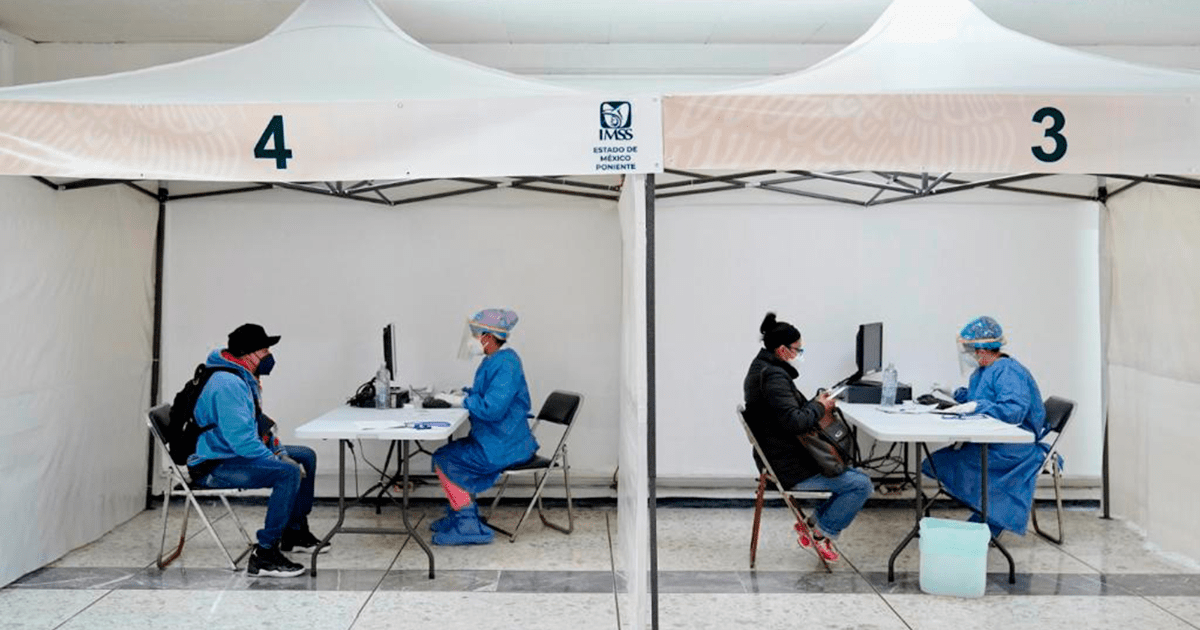- This strategy consists of using the infrastructure of the Temporary Attention Centers (CAT) that were created to attend to Covid-19 and increase the current installed capacity by 771 beds.
- Inpatient medical care will be provided to stable patients to continue their treatment and optimize the hospital bed for more severe cases.
- The 20 units that will be converted are located in 15 states in the country and have medical, nursing, social work, nutrition and other areas.
The Mexican Social Security Institute (IMSS) implemented the strategy of Hospital Outreach Units (UEH) at the national level, which will increase the current installed capacity by 771 beds to provide medical care to stable or recovering patients, and allow hospital beds are used for severe cases.
The general director of the IMSS, Zoé Robledo, pointed out that the Institute built hospital expansion units for the care of Covid-19, “they were not temporary, tents or spheres, but they were made in a constructive model that will allow them to last for a long time” .
He said that these spaces are being recovered for hospital care and to depressurize some hospital areas that are traditionally saturated.
“These annexes are ideal for the hospitalization of low-complexity Internal Medicine and Surgery patients who require minimal laboratory services, or who require a hospital stay to be completed due to the administration of a medication,” Zoé Robledo said.
The Hospital Outreach Units strategy began on June 1 and consists of using the infrastructure of the Temporary Care Centers (CAT) that were created to care for patients with Covid-19; Taking advantage of these spaces will streamline emergency services and improve the efficiency of the use of census beds.
The Hospital Extension will operate in 20 units located in the entities of: Baja California, Baja California Sur, Chiapas, Chihuahua, Coahuila, State of Mexico, Morelos, Nuevo León, Puebla, Querétaro, San Luis Potosí, Sinaloa, Sonora, Tabasco and Zacatecas .
In addition, it is planned to add two more facilities that are in Naucalpan, State of Mexico, and Lindavista, in Mexico City, with 40 beds each.
The centers that are already in operation are the Annex of the Regional General Hospital (HGR) No. 1 of Tijuana; the Annex of the General Hospital of the Zone with Family Medicine (HGZ/MF) No. 26, and the Annex of the Ambulatory Care Medical Unit (UMAA) No. 34, which are in Baja California Sur.
Also, the Annex of the Breast Cancer Unit, in Saltillo, and the Annex to UMF No. 89, in Monclova; the Annex to UMF No. 5, in Nuevo León; the parking lot of HGR No. 2 El Marqués, in Querétaro; the Annex of the UMF No. 45, in San Luis Potosí, and the Annex of the UMAA No. 199, in Tlalnepantla, State of Mexico.
Likewise, the Annex of HGZ No. 2 in Tuxtla Gutiérrez, Chiapas; the Annex of the HGR No. 1 of Ciudad Obregón, Sonora; the Annex of the UMF No. 6 Villas de San Alejandro, in Puebla; and the Annex of HGZ No. 7 in Cuautla, Morelos.
With the Hospital Extension Annexes, it is possible to have a smaller number of personnel in the centers, the hiring of general practitioners, the feasibility of reconversion for COVID-19 care and basic equipment for patient care.
For its implementation, the review of the infrastructure of the units, equipment and preparation for its subsequent operation was carried out.
The Hospital Outreach Annexes are an ideal place for the hospitalization of low-complexity emergency, internal medicine and surgery patients, who are stable and require minimal laboratory services and office assistants, to complete their hospital stay.
These centers will operate 24 hours a day and will have 123 places: 20 for medical personnel, 57 for nursing and 46 more from areas such as social work, nutrition; all with basic equipment for patient care and minimal laboratory services.
Also, the Hospitalization Platform of the Digital Health Ecosystem (PHEDS) will be applied, a technological tool to support health personnel that allows services to be standardized, in addition, facilitates teamwork, optimizes and speeds up the occupation of beds, avoids duplication of records and provides greater information security.
The annexes have a protocol and spaces for the care of Covid-19 patients and the IMSS maintains strict epidemiological surveillance, so that at any time it has the ability to reconvert the spaces again to care for patients with the disease.
Official Information is a service of El Economista to contribute to the dissemination of information and communications from governments, municipalities and relevant public actors for citizens.








